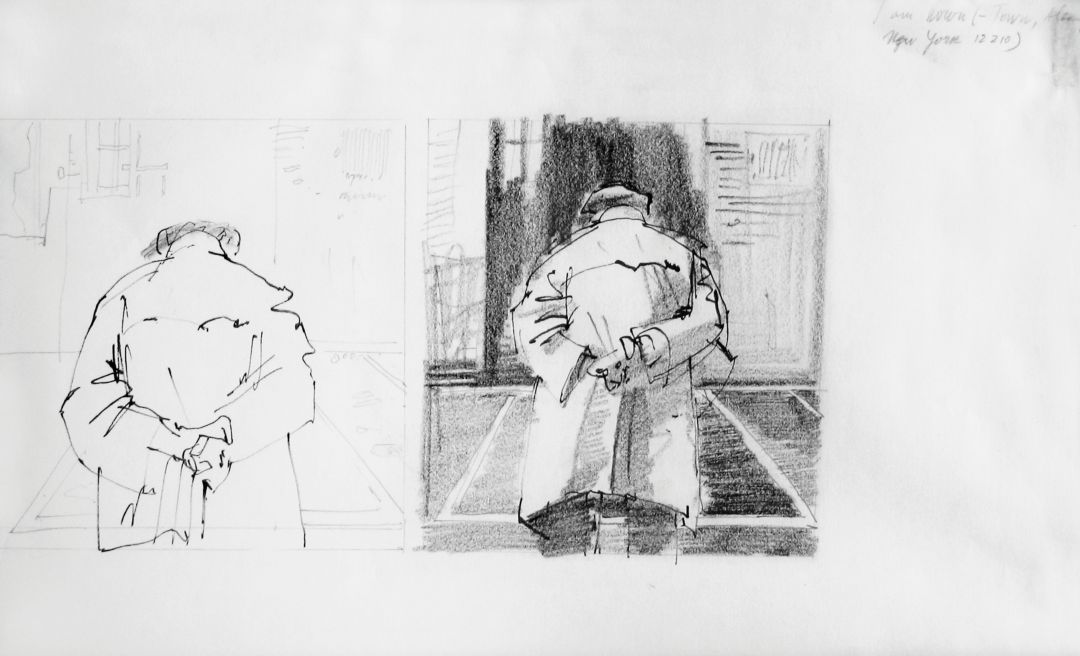On this day, June 12th, 2023, we mark the centenary of the birth of Miodrag Mića Popović. Remembered primarily as a painter, but also as a film director, screenwriter, theoretician, and art researcher, Miodrag Mića Popović will leave an indelible mark on the art of the twentieth century with his uncompromising struggle for freedom of thought and artistic expression. His search, which begins with poetic intimacy and civic realism, through expressionism and Art informel, with his contribution to scene painting, testifies to the special giftedness and skill of a multifaceted artist.
Born in Loznica on June 12th, 1923, Mića Popović left for Belgrade as a four-year-old with his family, where he discovered that it was possible to make a living from art as a high school student, by doing homework for his peers for a modest fee. However, going to an exhibition of French Impressionists in the fifth grade of the Third Boys’ Gymnasium will decide his profession. Delighted by the light, freedom, and ease of expression, he will firmly decide to engage in painting. He exhibited his first works in 1940 at the 13th autumn exhibition in “Cvijeta Zuzorić”, and after the end of the war in 1946, he enrolled in the Academy of Fine Arts in Belgrade, where the ideology of socialist realism, which he would oppose for many years, was waiting for him.

He would lead the first rebellion against the imposed value system less than a year after enrolling in the academy, in the class of Ivan Tabaković, who obviously supported his students’ desire to go out into nature and free themselves from political influences. Together with his classmates Peter Omčikus, Miodrag Bata Mihajlović, Mile Andrejević, Kosara Bokšan, Ljubica Jovanović and his future wife Vera Božičković, he went to Zadar in search of motifs and expressions similar to interwar art or Western formalism, where they found the “Zadar Group”. From Zadar, he will come back to Belgrade with many drawings, paintings, and notes, greeted as a decadent without the possibility of returning to the Academy. This, however, did not prevent him from being the first post-war painter in Belgrade to organize an independent exhibition.
This is followed by periods in Paris, the meeting place of the world art scene, where he turns to abstraction and art informal as a “healthy interruption of an unhealthy state in art” that will last until 1969. The dissident’s life will continue in Simina 9a, discussing topics from art, socialism, communism, but also everyday life with his best friend Borislav Mihajlović Mihiza, Dobrica Ćosić, Živorad Stojković, Lazar Trifunović and Antony Isaković, which he will immortalize in the painting “Hexagonal Space” in 1970, which belongs to the cycle of “Scene Painting” that the artist developed by returning to figuration from 1969 to 1980.
Although he was praised for his painting talent but also criticized for his choice of subjects, he did not see himself as a politically engaged painter. He accepted the role of a witness of the times rather than a critic. For “Politika” in November 1995, a year before his death, he stated: “I already encountered resistance at school, and do you know why? Because I have always dealt with the truth. In the time of our socialist realism, from which I only accepted realism, the task was to deal with falsehood. It was not a formal conflict at all. I could be a socialist realist par excellence in terms of how I paint, but the conflict was what I paint and how I approach a given subject psychologically, sociologically, and politically. Everything seems to me that the more time passes, the less clear it will be to people why I was challenged.”
Jelena Marković
art historian, volunteer
National Museum Kraljevo
